-
Victorious in team event of the ‘9th Guryeo Women’s Championship and National Collegiate Ssireum Championship’ Second victory in the season following victory in the National Ssireum Championship Conquers team and individual events in major tournaments this year [September 29, 2017] <The YU Ssireum Team won the team event at the 9th Guryeo Women’s Championship and National Collegiate Championship for the second victory of the season.> The YU Ssireum team (Coach Heo Yong) won the team event at the 9th Guryeon Women’s Championship and National Collegiate Championship held in Gurye, Jeonnam on the 22nd. With this win, the YU Ssireum team recorded their second victory of the season for team events in national collegiate tournaments. YU took the winner’s cup at the 47th National Ssireum Championship, which was the first tournament of the season, and also won the last tournament of the year, making 2017 YU Ssireum Team’s year. In the preliminaries, YU defeated Jeonju University 4:2 and ousted Dankook University 4:2 in the semi-finals, showing their unparalleled skills. In the finals, they made a dramatic victory by defeating Inha University 4:3. Though the YU Ssireum team was doing well this year, winning this tournament was questionable. Some of the main athletes were injured before the tournament and so it was impossible to compete with their regular roster, so YU was evaluated to be one of the weaker teams. However, once the tournament actually started, YU exhibited superior skills from the preliminary rounds and demonstrated the class of the best college ssireum team. Coach Heo Yong (right on photo), who has lead YU’s ssireum team to its golden age, said, “We were able to win as the athletes became one with the will to be victorious at all costs despite various situations that put them at a disadvantage. I would like to thank the captain Kwak Ho-chang, as well as the rest of the team.” He added, “Despite the school being in several hardships, the school is providing full support so that the athletes including the ssireum team can focus on training. We will continue to work hard to meet expectations.” Coach Heo Yong, who led YU to victory in the team event at this tournament won the Best Coach Award. This year, the YU Ssireum Team not only won the major team events, but also took victories in individual events, and is once again receiving attention as a powerhouse for college ssireum. At the ‘71st National Ssireum Championship’ held in July, Park Chan-joo (20, Department of Special Physical Education, freshman) won the college Jangsa-class and Jeon Do-eon (20, Department of Special Physical Education, sophomore) took first place in the Yongjang-class. At the 14th National Haksan Ssireum Championship held in April, Jung Yeon-min (22, Department of Special Physical Education, junior) was victorious in the Jangsa-class, as the YU Ssireum Team swept the sand boxes in both team and individual events.
-
During Professor Park No-geun’s class on ‘Steel Forging (Design Class)’, professor and student came up with an idea Developed ‘slag measurement’ technology, an old challenge of the steel industry Pursuing application of equipment at the site through industry-academic research together with POSCO, etc. [September 25, 2017] News was made as YU undergraduate students came up with an idea during class that led to a patent being registered with high values for industrial use. This was the fruit reaped after two years of passion and challenges from a professor and students. The patent registered was ‘Slag Thickness Measurement Device (Patent 10-1764894)’. This was devised during the second semester of 2015 so that the idea that was made during the ‘Steel Forging (Advisor Park No-geun)’, which is a design class for juniors in the School of Materials Science and Engineering, could be applied in industrial sites. The inventors for the patent are YU Professor of Materials Science and Engineering Park No-geun (36, left on photo), Joo Jae-bin (27) who was a senior at the time, Kim Hyeong-wook (27), Koo Jung-mo (27), and Koo Gwi-young (23) who were sophomores. These students who were undergraduates when the patent was first applied for (October 2015) are not working at metal-related companies, while some enrolled in graduate school. Joo Jae-bin, who is working at a company specializing in the manufacturing of special steels, said, “As an undergraduate, it was difficult to complete a patent application, complete CAD works, and apply for patents. In particular, the essence for the patent was on improving the process, but it was difficult to gain information on the process, so we had difficulties.” He added, “I think the countless meetings with the professor and students to perfect the idea led to such great results. My experience back then helped me greatly in finding a job specializing in the production of special steels.” Professor Park said, “The steel forging design class aims at understanding the chemical reactions between processes of steel refineries such as POSCO or Hyundai Steel, and to apply this to design processes or materials that can make it safer and have higher productivity in terms of engineering.” He added, “Applying engineering knowledge to design ideas that can be applied in an actual industrial site, and filling out patent applications as an undergraduate student will be a great asset in carrying out actual work.” <‘Steel Forging’ class of Professor of Materials Science and Engineering Park No-geun> It is expected that the patent registered will have significant value for use in actual industries. Slag refers to residue generated during the process of refining steel. Voices on the need to measure the quantity of slag in refineries were made dozens of years ago. But it was practically impossible to measure the amount of slag in high temperature work environments that reached up to 1,500 degrees. Therefore, operations were carried out depending on past experiences. Professor Park said, “Slag is a liquid ceramic made when oxygen mixes with molten metal. Ceramic materials should not be mixed with steel so it must be removed as much as possible. Therefore, it is very important to measure the slag thickness and volume.” He added, “During class, the students and I decided to apply the idea of measuring the height and volume of beer and foam in a glass to molten metal and slag. Starting with such idea, we resolved the problem occurring when measuring slag thickness at 1,500 degrees using the TRIZ (Theory of Solving Inventive Problems) and developed technologies that could be applied practically, and we were thus able to receive this patent.” The registered patent can be used by companies with blast furnaces such as POSCO and Hyundai Steel, and small factories with electric furnaces to adjust working conditions by measuring the amount of slag when making molten metal. Because slag and molten metal were discarded together in the past to remove slag, it had the weakness of having low recovery rates of molten metal. Using this patented technology to precisely measure the amount of slag, it will be possible to remove just the necessary amount of slag, and can thus improve the recovery rate of molten metal. Professor Park said, “Through the support of the YU PRIME program, I have been listening to the needs of industries and have been thinking about designs that could resolve the needs and be applied. This patent will be a ground-breaking technology that can remove slag, which has been an age-old challenge of the steel industry.” He added, “We are currently using this patent to discuss purchase condition development projects through industry-academic research with POSCO and small and medium enterprises in Pohang. We are also doing research to make a prototype for the idea and to apply it in actual facilities.”
-
World’s top two world university rankings together with QS Ranked 1,102 universities around the world including 27 Korean universities such as YU High scores in world university rankings including Leiden Ranking [September 7, 2017] THE World University Ranking 2018 Rank in Korea World Rank College Overall Score 1 74 Seoul National University 64.9 2 95 KAIST 60.9 3 111 Sungkyunkwan University 59.3 4 137 Pohang University of Science and Technology 57.3 5 201-250 UNIST 50.1 6 Yonsei University 50.0 7 Korea University 48.5 8 351-400 Hanyang University 41.0 9 GIST 40.3 10 401-500 Kyunghee University 39.7 11 Chung-Ang University 36.0 12 501-600 Ewha Womans University 33.9 13 University of Ulsan 32.9 14 Sejong University 31.6 15 Konkuk University 30.7 16 601-800 Pusan National University 29.3 17 Sogang University 27.6 18 Yeungnam University 23.8 19 Inha University 23.4 20 Chonbuk National University 22.9 21 Chonnam National University 22.7 22 Kyungpook National University 22.2 23 University of Seoul 21.5 24 801-1000 Ajou University 20.3 25 Seoul National University of Science and Technology 19.6 26 Chungnam National University 19.1 27 Hallym University 16.4 * Source : THE World University Ranking 2018 * Rank in Korea : is obtained by calculating score by index, not rank by the official announcement. YU (President Sur Gil-soo) was ranked 18th in Korea (601-800 in the world) in the British university ranking institute, ‘THE’ (Times Higher Education). On the 5th, THE announced its world university ranking results on 1,102 universities around the world. A total of 27 Korean universities were included such as YU, Seoul National University (74th) and KAIST (95th). In this ranking, Oxford University of England took first place in the world, followed by Cambridge University of England and the California Institute of Technology, Stanford University, and the Massachusetts Institute of Technology (MIT) from the United States for the top 5. THE, which was established in 1971, is an authoritative global university ranking institute together with the British QS (Quacquarelli Symonds) and has been announcing world university rankings since 2004. Its rankings are based on five indices such as educational conditions (30%), research achievements (30%), citations of theses (30%), internationalization (7.5%), and industry-academic cooperation (2.5%). Educational conditions are subdivided into five indices, research achievements into three, and internationalization into three. In particular, the world university rankings of THE applies strict standards and is globally acclaimed. Meanwhile, YU surprised the world by being ranked 37th in the world (based on top 10% thesis citation) and first in the world in the mathematics and computer science sector in the ‘2017 Leiden Rankings’ that was announced in May. YU was ranked in the top 50 in the world for three consecutive years in the mathematics and computer science sector in the Leiden Rankings that assesses global university rankings based on the quality of theses. Excluding YU there were no Korean universities ranked in the top 20 in all of the six fields announced by Leiden Rankings, thus demonstrating that YU’s research capacities are acknowledged around the world. YU President Sur Gil-soo said, “Our university has been continuously receiving good evaluations from world-acclaimed university ranking institutes,” and added, “We will continue to provide support so that our education and research levels can become of world-class levels.”
-
Wins the 2017 Kazakhstan Grand Prix Judo for the Disabled Wins all matches with ippon, showing unparalleled skill levels Following two championships in the single and group sectors of the ‘2017 Asia Judo Championships for the Disabled’ in May, another gold at an international tournament [September 13, 2017] <Kim Yun-ho (center) of YU Judo won the ‘2017 Kazakhstan Grand Prix Judo for the Disabled’ (-81kg division) to take gold.> Kim Yun-ho (21, Department of Special Physical Education, junior) of YU judo took the gold medal by winning the ‘2017 Kazakhstan Grand Prix Judo for the Disabled’ (-81kg division). He won a total of three gold medals in two international tournaments that he competed in this year, including a gold in the group tournament. <Kim Yun-ho (white) grapples his opponent from Kazakhstan in the finals of the ‘2017 Kazakhstan Grand Prix Judo for the Disabled’> Kim won gold by defeating all of his opponents with ippon in the –81kg division at the Grand Prix Judo for the Disabled at Kazakhstan from September 5 to 10. Kim also conquered the Asian stage at the ‘2017 Asia Judo Championships for the Disabled’ held at Tashkent, Uzbekistan in May by winning two golds in the individual and group tournaments. Meanwhile, despite having visual impairments, Kim is a highly skilled and promising athlete who won two general college tournaments, not tournaments for the disabled. After ceaseless persuasion from Coach Park Noh-shik of the national disabled judo team, Kim finally joined the national disabled team in April of this year. Since joining the national team, he won three gold medals in two international tournaments and brightened his prospects to earn a medal at the 2018 Asian Games for the Disabled and the 2020 Paralympics.
-
College of Medicine Professor Choi Hyeok-jae’s research team joint research with the Marine Biodiversity Institute of Korea Microorganism that produces useful antibiotics with excellent antibacterial and antibiosis functions Finds optimal culturing conditions of microorganisms containing expensive antibacterial substances... Green light for the marine bio industry [September 13, 2017] <Professor Choi Hyeok-jae of the College of Medicine who discovered a new marine microorganism that produces useful antibacterial substances> Upon culturing and analyzing marine microorganisms found in the sedimentary soil on the coastlines of Jeju, the Ministry of Oceans and Fisheries announced that it had confirmed that it contained prodigiosin, a substance with excellent antibacterial and antibiosis functions. The research team of Professor Choi Hyeok-jae (left on photo) of the YU College of Medicine and the research team of Dr. Grace Choi of the Marine Biodiversity Institute of Korea discovered a new marine microorganism while exploring the sedimentary soil of the coastal regions in Gimnyeong, Jeju in March of last year. This substance was named Mabikibacter ruber after the name of the Marine Biodiversity Institute of Korea. The discovery of this microorganism was introduced globally by being published in the world’s most authoritative academic journal in the microorganism taxonomy sector, ‘IJSEM’ (International Journal of Systematic and Evolutionary Microbiology) on August 25, 2017. Mabikibacter ruber is a word combining MABIK from the National Marine Biodiversity Institute of Korea and bacteria (bacter). ‘Ruber’, which means red in Latin, was added as it has a red color while being cultured. Professor Choi said, “This strain was found by coincidence from marine sediment specimens that students on vacation collected.” He added, “This research was possible thanks to the students who are always interested in the surrounding nature.” In order to check the biological structure and whether it contains useful materials, the research team cultured Mabikibacter ruber for seven months in a medium (liquid or solid compound with nutrients needed to culture microorganisms, plants, tissues and cells) and extracted the strings and conducted chemical analysis. They discovered that it contained prodigiosin, an antibiotic with a red color. Prodigiosin is widely used as an antibacterial and antibiotic substance, while being effective against malaria. It is also being used for developing treatment for pancreatic cancer. There were also recent reports that prodigiosin suppresses the growth of borellia bacteria that causes lyme disease (infectious disease caused by a tick biting a person and spreading the borellia pathogenic bacteria in the human body causing diseases in various organs. The early symptoms are fevers, but when it advances, it can cause encephalitis, arrhythmia, myocarditis, etc.). It is thus expected that its value as an antibiotic will grow in the future. <College of Medicine Professor Choi Hyeok-jae’s research team> Professor Choi’s research team said, “In this study, we succeeded in the isolation and purification of prodigiosin, which was known to be very difficult, thus confirming the structure of prodigiosin that produces Mabikibacter ruber.” He added, “This substance is a prodigiosin derivative not available in the market, so its economic potential is enormous.” The research team found the optimal culturing conditions that can produce prodigiosin in mass amounts through the process of culturing Mabikibacter ruber, and is planning to develop mass production technologies through this. Currently, prodigiosin-type antibiotics are being traded at high prices in the pharmaceutical markets, and in the event that mass production technologies are developed by the research team and the technologies are transferred to relevant industry, it is expected to contribute significantly to the activation of the marine bio industry.
-
Proposed ‘smart rainroof bus’ and received good reviews for its ‘creativity, marketability, realistic possibility’ Improved capacities in majors through ‘C++ Camp’, ‘Embedded Camp’ and academic club activities during vacation Professors provided instructions at camps and clubs to raise satisfaction levels and capacities of students [September 12, 2017] <The YU Department of Information and Communication Engineering HOWTO Team awarded at the ‘4th Korean SW Convergence Hackathon Contest’.> (back row, left to right: Yang Hyun-gyu, Lee Yun-ho, Professor Kim Young-tak, front row left to right: Heo Jin-woo, Kim Ji-hyeon, Jang Ji-mo, Ha Dong-soo) Students from the YU Department of Information and Communication were awarded at the ‘4th Korean SW Conversion Hackathon Contest’. This contest, which is the nation’s largest SW convergence technology contest, was held for three days at the Kyungpook National University Global Plaza from the 31st of last month to September 2 hosted by the Ministry of Science and ICT and the National IT Promotion Agency. Hackathon is a word combining the two words of ‘hacking’ and ‘marathon’. Like a marathon, participants come up with ideas, engage in programming, and build creative works without resting for 42.195 hours. This contest was comprised of the three themes of ‘free topic’, ‘development of services for improving common life’, and utilization of public-data based water resources and development of flood prevention services’. A total of 296 people in 60 teams announced their unique ideas. In result, the ‘HOWTO’ team comprised of Heo Jin-woo (25), who graduated, and juniors Ha Dong-soo (24), Yang Hyun-gyu (24), Lee Yun-ho (22), Jang Ji-mo (22), and Kim Ji-hyun (20) of the YU Department of Information and Communication Engineering was awarded in the free topic sector. The idea proposed by the HOWTO team was the ‘Smart Rainroof Bus’. They designed functions in which wipers would activate automatically and a rain roof would operate automatically when opening and closing doors for passengers by detecting rain while the bus is operating. Their idea received good reviews in terms of creativity, marketability and realistic possibility. Team leader of HOWTO Heo Jin-woo said, “We thought about ways to improve user convenience by integrating IoT in buses that we use every day, and came up with this unique idea during our brainstorming session.” All of the students that were awarded were under the YU Department of Information and Communication Engineering’s HOWTO club (Advisor Kim Young-tak). The network programming academic club ‘HOWTO’ started in 2000 with 11 students, and gained popularity now having over 100 students participating in the club activities. They all said in unison, “The major capacity improvement camp operated during summer break by the department helped a lot in making it possible to come up with ideas, program, and configure prototypes in a short period of three days.” In addition to the regular curriculum, the students of the YU Department of Information and Communication participated in the ‘C++ Camp’ and ‘Embedded Camp’ during breaks to learn programming languages. Based on this, they applied it in hardware and improved their capacities through 3-4 week concentrated learning sessions. Despite these classes not being part of the regular curriculum, professors instructed the students to enhance student satisfaction levels, while also helping them to improve their capacities in their majors. Department of Information and Communication Engineering Professor Kim Young-tak, who is the advisor of the HOWTO club said, “It might be a bit difficult to follow classes in majors in the beginning,” and added, “If students participate in camps and programs on their majors during their vacation or through academic clubs aside from regular classes, it will help them gain more interest in studying their major.”
-
YU holds 'Saemaul Undong' training to next-generation leaders from eight countries in Asia and Africa "Want to integrate the Saemaul Undong for our national development... Want more Saemaul training opportunities" [August 28, 2017] <YU held Saemaul Undong training to 20 international students from Asia and Africa> Learning about the Saemaul Undong has become a new trend for international students from emerging countries studying in Korea. YU (President Sur Gil-soo) held Saemaul Undong training for international students enrolled at YU from August 21 to 25. This program, which was carried out with the support of the Saemaul Globalization Foundation' was organized to spread the meaning of the Saemaul globalization movement and the value of economic development to next-generation leaders of emerging countries, and to discover local experts for the successful operation of the Saemaul globalization project in the future. Unlike the past where Saemaul Undong training was offered as invitational training such as public employees and experts by the government, local autonomous groups, public institutes and corporation, this training was made up of the voluntary participation by 20 international students from the three African nations of Ethiopia, Tanzania and Ghana, and the five Asian countries of Uzbekistan, Vietnam, Nepal, China and Mongolia. This means that the global demand for the Saemaul Undong is not just for the older generation, but is spreading quickly to younger generations as well. The international students who participated in this training learned about the Saemaul Undong and Korea's economic development such as the principles and strategies of Saemaul Undong, characteristics of Korea's economic development, Saemaul Undong and rural development, forest greenification and erosion control and Saemaul Undong, and theories and practicality of leadership, etc. for five days. In addition, they had the opportunity to experience theoretical knowledge through visits to the Pohang Sabang Memorial Park, POSCO, and the Cheongdo Saemaul Undong Memorial Hall. Based on the knowledge and experience they acquired through this training, the students established action plans that could be integrated into the development of their nations and shared their opinions in order to improve their understanding on plans to apply the Saemaul Undong. <International students from Asia and Africa who visited the Cheongdo Saemaul Undong Memorial Hall> Chau Thi Thu Thuy (30, YU Graduate School of Korean Language and Literature PhD) from Vietnam who led the team said at the completion ceremony on the 25th, "I was able to see and experience a lot about the Saemaul Undong and Korea's economic development through this training," and added, "I would like to study hard at YU and go back to my home country to be contribute to the development of our country. I would like more opportunities for students to experience the Saemaul training for not only the older generation such as public officials, but also for students who will lead the future." YU International Development Center Director Park Seung-woo who oversaw this training said, "The changed perception of the people based on the understanding of the Saemaul spirit and the firm belief and continuous will of leaders played a big role in the success of the Saemaul Undong." He added, "I hope that this training will act as an opportunity for personal development and for continuously sharing the economic development experiences of Korea's Saemaul Undong. We should strive to mutually share the capacities and development experiences of individuals and countries." The YU International Development Cooperation Center is expected to become the top educational institute for the Saemaul Undong by taking the lead in the globalization of the Saemaul Undong from a mid- to long-term perspective by spreading the Saemaul Undong to students who wish to become next-generation leaders.
-
Choi Gyu-jin in the PhD course at the Department of Physics considerably increases OLED life and light efficiency Published in the recent issue of the global academic journal 'Advanced Materials' Increased possibility to apply in high resolution displays [September 4, 2017] <Choi Gyu-jin who is currently in the PhD course at the YU Department of Physics developed platform technologies that can significantly increase light efficiency of displays> Choi Gyu-jing (29, PhD) of the Department of Physics at YU developed platform technologies that can significantly improve the light efficiency of OLED (organic light emitting diode) display to receive attention from academic circles and industries. Choi substituted organic substances used for the hole transport layer of OLED elements with the secondary mineral material, molybdenum disulfide (MoS2) nanosheet to increase the life of materials. The hole transport layer was surface treated with ion beam and rubbing methods to acquire light with very high polarization. Recently, the importance of displays has grown greatly in the advanced electronic device sector, so Choi's research results are receiving more attention. Up until now, research on OLED polarized lighting, together with improving efficiency of displays, has been carried out continuously. Most studies adopted the method of strongly rubbing materials below the illuminating layer in the display to arrange the illuminating material molecules in one direction. <Mimetic diagram on surface treatment of the hole transport layer MoS2 nanosheets with rubbing method and ion beams to align the display lighting layer molecules> Choi said, "The polyimide material used in the past rubbing method is an insulator. Therefore, no matter how thin it is applied, it rapidly lowers the efficiency of materials. In addition, it is difficult to obtain clean lighting images due to surface scratches caused by strong rubbing." He went on saying, "In this study, MoS2 nanosheet was used for the hole transport layer, and obtained synergy effects by applying highly straight ion beams and rubbing methods simultaneously. Accordingly, by arranging the hole transport layer molecules in a straight line, it was possible to align the illuminating material molecules on top of it and thus enhance polarization by more than two times other studies. In particular, ion beams can help remove scratches caused by rubbing, and therefore, it enhanced the applicability of this in high resolution displays." Choi's research results will be published in the September issue in the world-acclaimed academic journal in the materials engineering sector <Advanced Materials>, impact factor (IF) 19.79. The corresponding author YU Professor of Physics Kwak Jin-seok (48) said, "The research results is valuable in not only that highly polarized illuminating materials that can deduce practical efficiency improvement of OLED and LCD displays were developed, but that it is the development of highly polarized light source that can be applied to various optical materials or optical devices and optical measuring instruments." Choi said, "My main field of research is optical materials." He added, "As I increased the possibility of application in the display industry through this study, I will additionally carry out research for improving the optical efficiency of display materials."
-
Department of Political Science & Diplomacy class of '05 alumnus Ahn Hyo-min joins third team of Daewon Theater Voice in the popular game 'League of Legend' Ahn Hyo-moon graduated from the YU Department of Political Science & Diplomacy, and after great efforts, he joined the Daewon Theater in the third team. He is currently active as a voice actor and played the voices of Zenyatta of 'Overwatch' and Remake Warwick of the 'League of Legend'. We met with Ahn Hyo-min and asked him about what efforts he made to become a voice actor and what was life like when he attended YU. We also asked for advice for students who dream of becoming voice actors. Why did you enroll at the YU Department of Political Science & Diplomacy? Up until high school, I had an ambitious dream to change this world. That is why I decided to go to the Department of Political Science & Diplomacy. At the time, this department did not have any hierarchy or other vices. That is why I loved the department so much. While preparing to become a voice actor and because of my ROTC activities, I was not able to participate as much in the department, but it was fun studying in this department as well. How did you prepare for becoming a voice actor while in college? I gained the dream of becoming a voice actor by coincidence in April after enrolling. So in May, I looked for voice acting academies. Most of these academies are in Seoul so it was difficult to find. I finally found a famous voice acting academy in Daegu. I went to the academy and took a test and then started attending this academy. My first problem was fixing my speaking habits. I was born and raised in Daegu so I had a strong Daegu accent. So I asked my teacher what I needed to do to change my accent. My teacher recommended that I go live in Seoul, but if I can't, I should try to speak with people from Seoul as much as possible. So I began online community activities. I talked with other aspiring voice actors that I got along with and went to Seoul once or twice a month. We spoke together and made amateur dubbing and really worked hard on fixing my dialect. I was able to fix my accent in a year and a half. In my senior year, I attended an academy in Seoul. After classes and finishing ROTC training every Monday and Friday, I took the KTX and went straight to Seoul. I spent a year going to classes on Friday night and Saturday and returning to Daegu. What is the most memorial thing that happened while in college? There was something more special than others. When people introduce their selves for presentations, they would usually say, "Hello, I am so-and-so and in so-and-so year," but I would add that I am preparing to become a voice actor. For example, I would say, "Hello I am Ahn Hyo Min at the Department of Political Science & Diplomacy year of '05 and I am an aspiring voice actor," and then I would do a bit of voice acting. At the time, I would imitate the narration of Mureuppak Dosa. By doing so I learned to become bolder. Voice actors have to act with their voice in front of many people so they need to be really bold. I worked hard since my college years to improve this area. You were picked for the third team of the Daewon Broadcasting Voice Actor Theater. What was the process up until passing? They only choose male voice actors who completed their military service, so after being discharged from the military, I spent a month at home resting and then went to Seoul. I attended an academy in Seoul. I completed the voice actor course at the KBS Academy and received training from Mrs. Jung Mi-sook, who was the voice actor for Nami in the animation <One Piece>. In addition, I managed an online internet cafe on Naver called Voice Maru for seven years and interacted with many people and held study sessions. I was finally able to pass after a long time of preparation. According to one media, it said that acting Remake Warwick in the game 'League of Legend' is one of the three hardest characters. Why is that so? It takes a lot physically. Remake Warwick is a crazy wolf character and requires a really rough voice. It was had having to yell a lot. Monsters and villains are usually big in size so the voice also has to be loud. So it took a lot on the throat, and when recording continuously, it put my throat in poor condition. How did you get to play the hero Zenyatta in 'Overwatch'? Blizzard picked me. It was not cast by application, and instead Blizzard would look at various works and chose the voice actors. That is how I got to play Zenyatta. What did you like the most about Zenyatta? Zenyatta is a robot monk warrior that transcended everything. I usually played roles of hurting and bothering nice characters and yelling all the time. On the other hand, Zenyatta was really new to me. It was a first time for me. I really love Zenyatta as a player of Overwatch. What efforts are needed as a voice actor? You need to identify the character and tone of your character. You should analyze it and then make efforts to maximize it. If you play the voice of a character, you should analyze that character's background, behavior, personality and its relationship with other characters. Such efforts include watching animations, movies and books in which similar characters appear. And always practicing speech is absolutely essential. Lastly, do you have any tips that you would like to give to aspiring voice actors? You need to do a lot of imitation. Some people say that imitating is the short-cut for gaining bad habits. But I do not agree. You need to imitate others a lot to improve. You need to see a lot, imitate a lot, and practice a lot. You can thus create your own database through this. As people who used writing practice notebooks as children may know, there are dotted lines or shadowed areas to trace across to write letters. You need to have a model to be able to look and follow. Without that, it will be difficult to be able to understand characters.
-
School of Mechanical Engineering Club ‘YUSAE’ wins 'overall best' repeatedly in large-scale contests such as in Gunsan Continuously participated in domestic and foreign contests such as in the US, England and Japan to gain experience since 2000 Established College of Mechanical and IT Engineering and the Department of Automotive Engineering in preparation of the 4th industrial revolution [August 22, 2017] <The YU self-made automobile club 'YUSAE' who won the ‘2017 KSAE College Student Self-Made Automobile Contest’> The YU School of Mechanical Engineering and the Department of Automotive Engineering's self-made automobile club 'YUSAE' team swept large-scale college self-made automobile contests this year. The YU YUSAE team won the grand prix at the '2017 KSAE College Student Self-Made Automobile Contest' that recently ended at the Saemangeum Gunsan Automobile Race Track. The YUSAE team took first place in the BAJA section joined by a total of 103 teams and won the Minister of Trade, Industry and Energy Award, a cash prize of 5 million won, and the winner's flag. The YUSAE team received high scores in various areas such as automobile test, auto-cross, endurance etc. In particular, in the last endurance race, it caught up 100 meters in the final lap of 35 laps to Hanbat University, and passed the finish line, creating the highlight of this event. The YUSAE team also showed unparalleled performance at the '2017 PRIME Baja SAE' at YU last month taking first place, making this second overall victory. This is the first time for an automobile designed and produced by the same university to win two large-scale college student self-made automobile contests in the same year. <'YUSAE' in an endurance race at the ‘2017 KSAE College Student Self-made Automobile Contest’> Cha Joon-ho (25, School of Mechanical Engineering, senior) of the YUSAE team said, "Team members shared opinions for ech part such as suspension, engine and frame in the automobile design stage and cooperated to make perfect designs. In the production stage, we minimize the range of error with the design to produce the automobile, which I think led to the great results." YUSAE, which was the first team in Korea to participate in the US Baja Contest in 2000, participated in the US Baja 14 times and also participated in the Formula contest of England, Japan and Australia, and the 'Shell Low Fuel Consumption Contest' of Malaysia to enhance their capacities in various domestic and foreign self-made automobile contests. The YUSAE team took three overall wins and second place one time in the past four years at the 'Baja SAE KOREA', and also took the gold medal at the '2016 KSAE Formula Contest', thereby solidifying its position as one of the strongest teams for self-made automobile contests for college students. <'YUSAE' that took overall first place at the ‘2017 Baja SAE KOREA’> Such achievements were not made overnight. This was the fruit of the ceaseless efforts of professors and students. YU ewas the first to host the Baja SAE in Korea in 1996. Professors worked hard to be able to host the international event and won sponsorships from automobile companies, and has thus successfully held the Baja SAE successfully for the 22nd year. Students have operated the self-made automobile club since 1992 to improve their practical capacities by producing automobiles based on the theories they learned in their regular courses. It is expected that the potentials of YU professors and students in the Department of Automotive Engineering will gain a synergy effect by linking up with the Ministry of Education's 'Program for Industrial Needs - Matched Education (PRIME)' being pursued by YU. YU separated the majors of electric, electronics, computer, information communication, and mechanical in its college of engineering in the past to establish the 'College of Mechanical and IT Engineering', and also established the Department of Automotive Engineering in this college and accepted its first freshmen class. Accordingly, it is expected that it will lead the fostering of human resources and develop the future-oriented automobile industry such as self-driving vehicles and electric vehicles, which were pointed out as prospective industries that will create future industrial value. <Car parade of the '2017 Baja SAE Korea' held at YU> YU Department of Automotive Engineering Dean Hwang Pyeong said, "Simply making a department does not give competitiveness. Hosting the international self-made automobile contests for 22 years and concentrating on the fostering of clubs over a long period of time so that students can assertively learn is the knowhow of YU. No university will be able to catch up in a short period of time." He added, "By operating the department together with the Ministry of Education's PRIME program from last year, it is expected that there will be more active industry-academic cooperation as well."

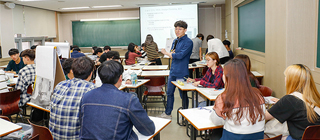
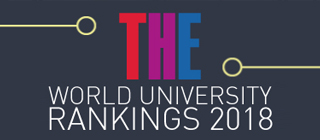
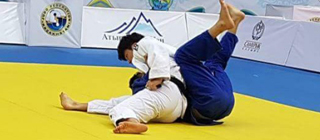
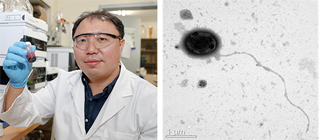
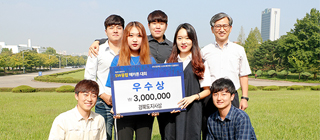
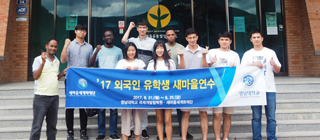
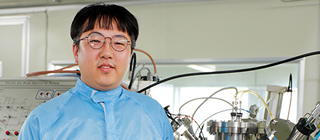
![[Person Who Walked Cheonmaro] Voice Actor Ahn Hyo-moon](/app/board/attach/image/thumb_33294_1504682070000.do)
